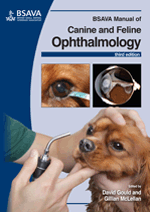
Full text loading...

The uveal tract is composed of continuous tissue that is anatomically subdivided into the iris, ciliary body and choroid. Pathological conditions that affect the uvea are commonly encountered in ophthalmic practice. This chapter covers a wide variety of conditions that affect the uvea, from normal variations, developmental abnormalities and age-related changes to acquired pathological processes. The anatomy, physiology and immune mechanisms are applicable to both dogs and cats. This chapter focuses on conditions that affect the anterior uvea (iris and ciliary body).
The uveal tract, Page 1 of 1
< Previous page | Next page > /docserver/preview/fulltext/10.22233/9781910443170/9781910443170.14-1.gif

Full text loading...
















































